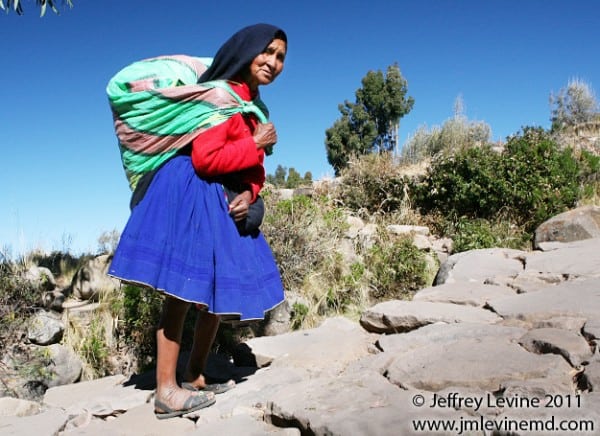
Taquile Island, a 452 acre rocky gem in the western part of Lake Titicaca in Peru, is home to a remarkably fit and sturdy group of elders. I discovered them on an international road trip to find and photograph faces of aging and learn how different cultures approach growing old.
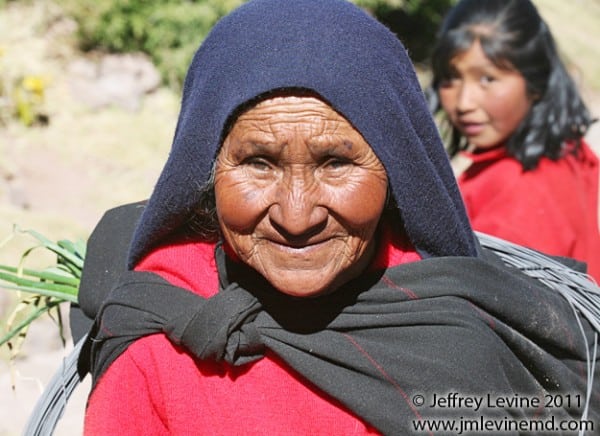
At 12,500 feet above sea level, Taquile Island is largely isolated from the rest of the world. There are no cars, and to get around you must travel one of the many rocky paths that traverse the island. I saw many elders – both male and female – nimbly negotiating the steep paths with large loads wrapped in colorful textiles and strapped to their backs. This was remarkable to me, as I was a bit short of breath and dizzy with altitude sickness! Their closeness to nature is readily apparent, with sheep, pigs, and dogs wandering all over the island with little use of fences or leashes
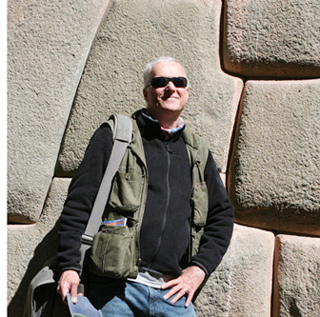 The people are divided into six communities and the native language is Quechua – an ancient language with no written form which dates from the days of the Incas. The economy revolves around textiles, agriculture, and tourism. Except in the schools, internet access is sharply limited. In my day on the island I saw no smokers, and the only overweight people were found among the tourists. Their diet consists primarily of locally grown potatoes, quinoa, fava beans, and corn, much of which is locally grown. Fish caught from the lake’s icy depths are an important source of protein, and red meat is eaten only on special occasions.
The people are divided into six communities and the native language is Quechua – an ancient language with no written form which dates from the days of the Incas. The economy revolves around textiles, agriculture, and tourism. Except in the schools, internet access is sharply limited. In my day on the island I saw no smokers, and the only overweight people were found among the tourists. Their diet consists primarily of locally grown potatoes, quinoa, fava beans, and corn, much of which is locally grown. Fish caught from the lake’s icy depths are an important source of protein, and red meat is eaten only on special occasions.
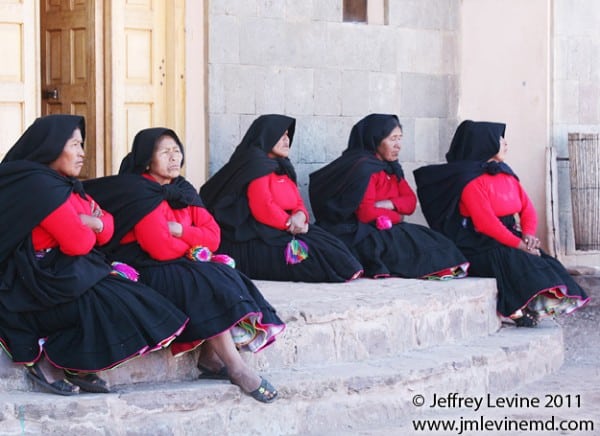
With my guide serving as translator, I spoke to many elders who all seemed spry and content. Their ages ranged from late 70’s to late 90’s. I have no doubt that their native diet promoted vigor and good digestive function, while a constant life style of walking on winding paths while carrying loads on their backs promoted good balance and strong bones. My guide informed me that the people do not brush their teeth, but instead chew coca leaves with natural mint which provides not only dental hygiene, but supplies mineral such as calcium and some vitamins. The coca leaves provide stimulants which gives a physiologic boost to help cope with thin air and high altitude.
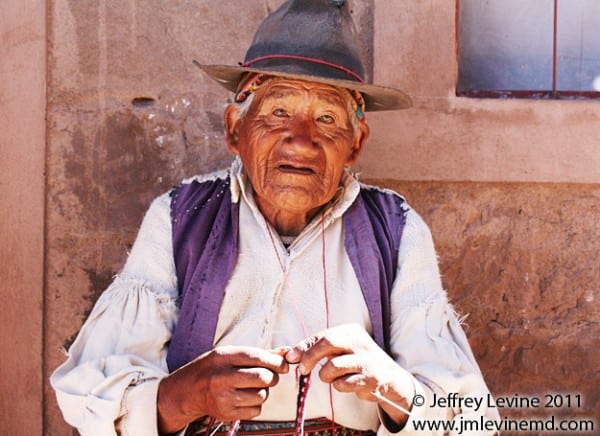
Textile production is an important part of the island’s culture, and both men and women learn their skills early in life. Social rank and marital status are designated by colors and patterns, and the designs incorporate symbols of the island’s daily life and seasonal changes. The women weave using a loom, and the men do knitting using complex techniques with as many as five knitting needles. I saw several very old men with dense cataracts doing knitting – their fingers working away with very fine movements – clearly maintaining upper extremity motor skills.
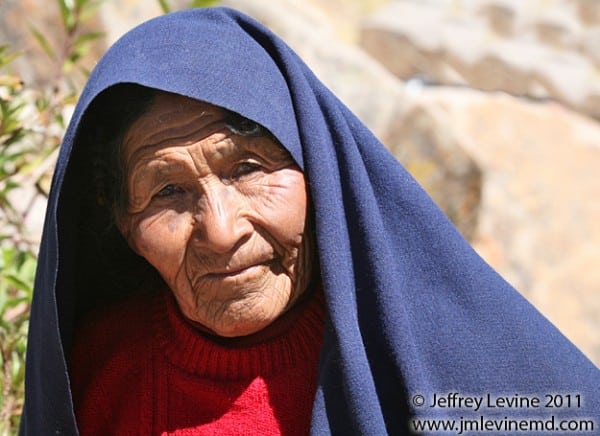
There is little modern medical care on Taquile Island, and when someone gets sick the first choice is a traditional doctor who will employ local herbal remedies. This doctor is often an Andean Priest, or Yatiri, who will begin the consultation by reading the patient’s coca leaves to get a picture of the past, present, and future. The prescription may include offerings to Mother Earth, or PachaMama, and the Mother Lake, or MamaKocha.
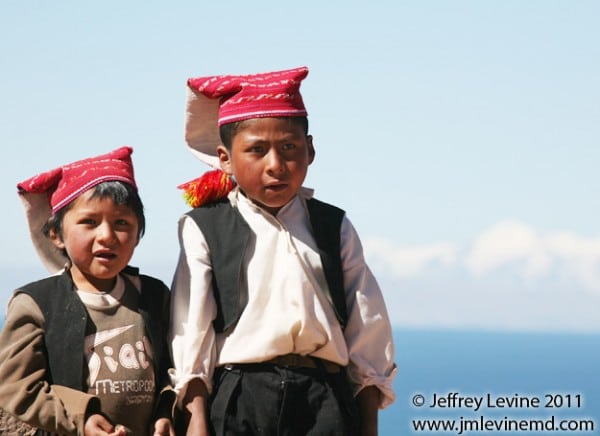
In reflecting on the elders of Taquile Island, I could not help but wonder whether their isolation from modern medicine also helped these amazing elders live longer, healthier lives.
* * * * * * * * * * * * * * * * * *
Related posts:
Soviet Relics in Central Asia
Celebrating Old Age at the Burning Ghats of Benares
Victory Day in Moscow
A Taste of Ancient Peruvian Medicine
The Twilignt of Jewish South Beach, Miami
Aging in Central Asia
Photographing Los Ancianos of Bolivia
Aging Inside Angola State Penitentiary
Faces of Istanbul
Geriatrics, Art, and Ancient Treasure on Lake Titicaca

Trackbacks/Pingbacks